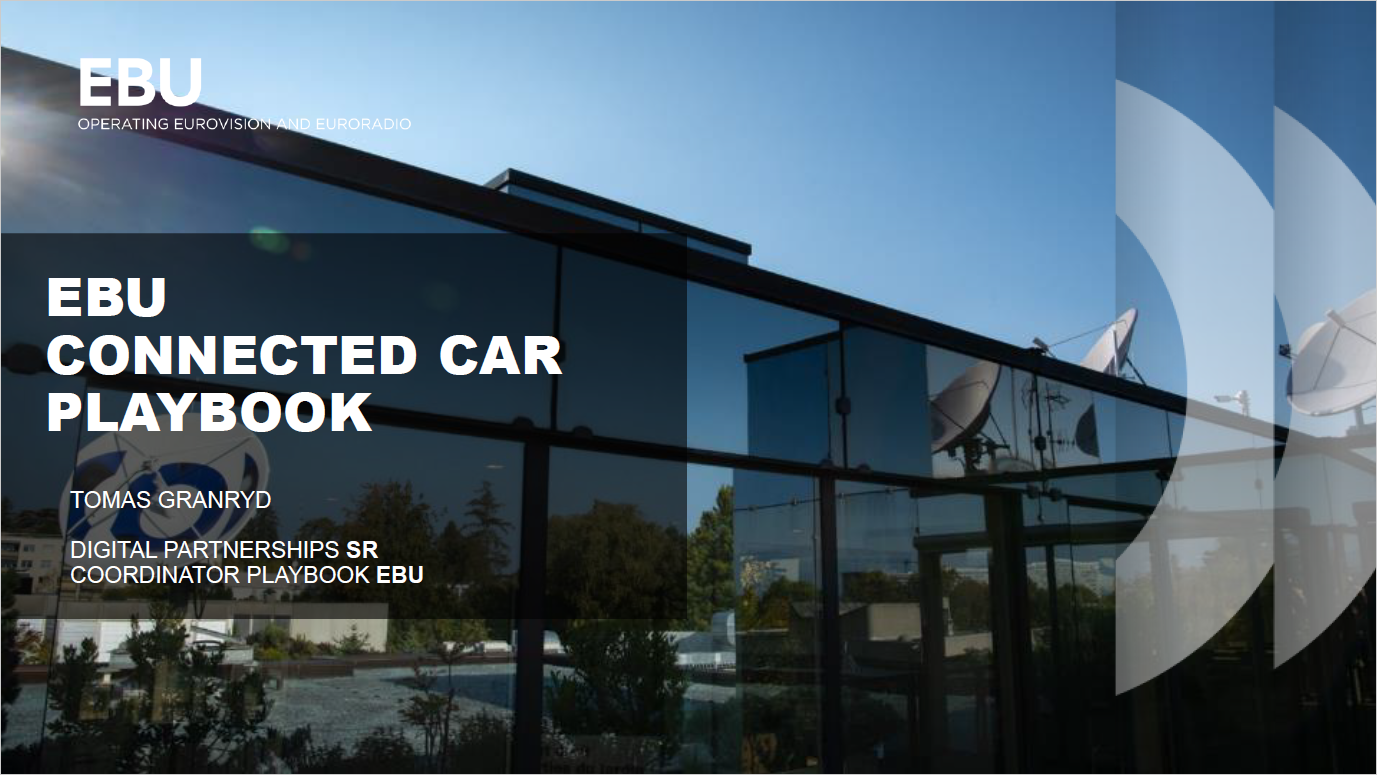
The EBU’s Connected Cars and Devices group, a subgroup of the Strategic Programme for Platforms, brings together EBU Members together to discuss challenges and opportunites in how media can be consumed in a new class of hyper-connected devices. The group provides an open forum in which to discuss projects, strategies and insights. The goal is to catalyse collaboration between EBU Members and industry and shape a unified view for public service media that benefits audiences.
EBU Connected Car Playbook
Developed as part of an EBU-wide initiative, the Connected Car Playbook aims to ensure that audiences can continue to easily find and listen to the content they love in connected vehicles. The Playbook represents a common, clear map of what is required from all parties involved. The Playbook is all about collaboration – all parts of the value chain: the car industry, operating system providers, app stores and the radio industry must work together.
EBU Members are invited to provide feedback on the Playbook before midnight on 8 April. To receive the survey link, please contact Maïlya Nicolet (nicolet@ebu.ch).
Tomas Granryd, who is coordinating the initiative for the EBU, goes into more detail on the goals of the Playbook here: Radio across Europe joining forces to fight for rightful place in the car.
Principles for radio in connected cars
The Connected Cars and Devices group developed a set of four principles used to guide the group's work and that should be taken into account whenever discussing the place of radio in cars. They also feed into the Connected Car Playbook.
The principles are set out below, and described in more detail in this article.
- Radio must remain easy to use. It should start with the push (or touch) of a button. Audiences love radio precisely because it is so easy and because they don’t need to choose. Even if we might add features, we should not forget that radio needs to remain intuitive and, especially in the car, safe to use without distraction.
- Radio should be impossible to miss. Just like the physical radio button used to be, it should exist on that first level and not disappear in the jungle of apps.
- Radio in the car should be focused and personalized. We should make smart suggestions based on prior listening but be transparent with the data we collect.
- Radio comes as a package. It includes public and private stations, as well as local, national and international broadcasters. All radio stations should be found in the same place

